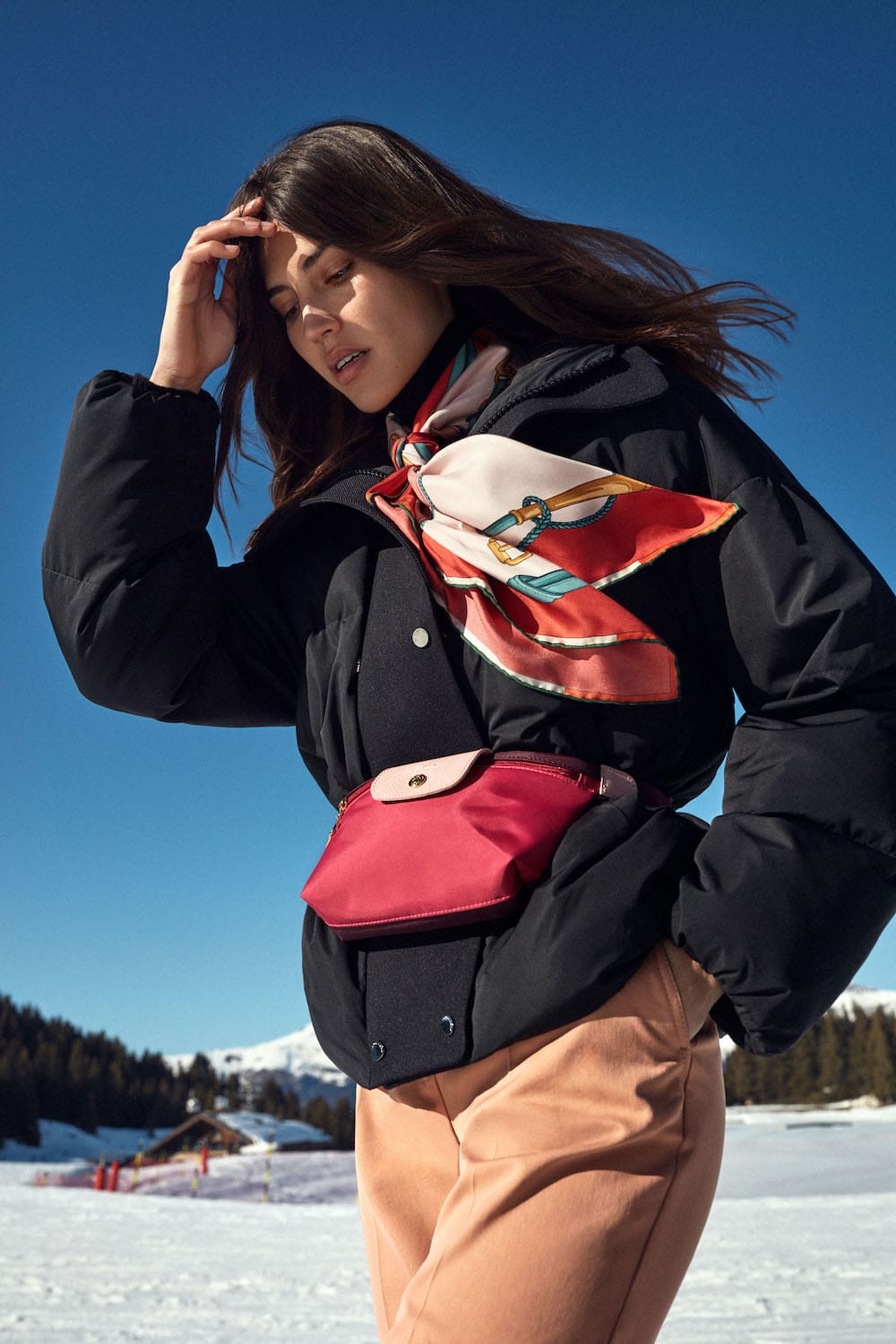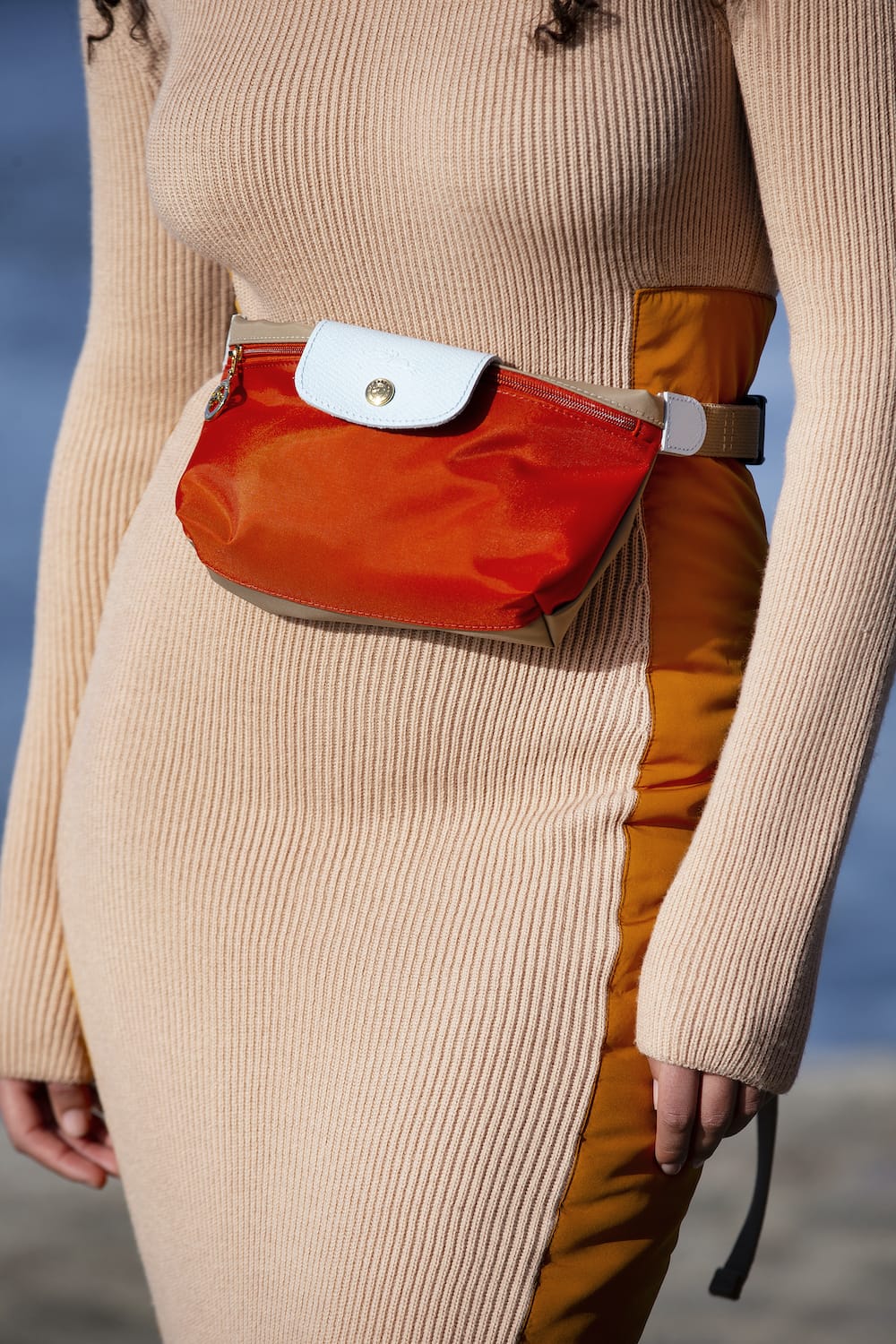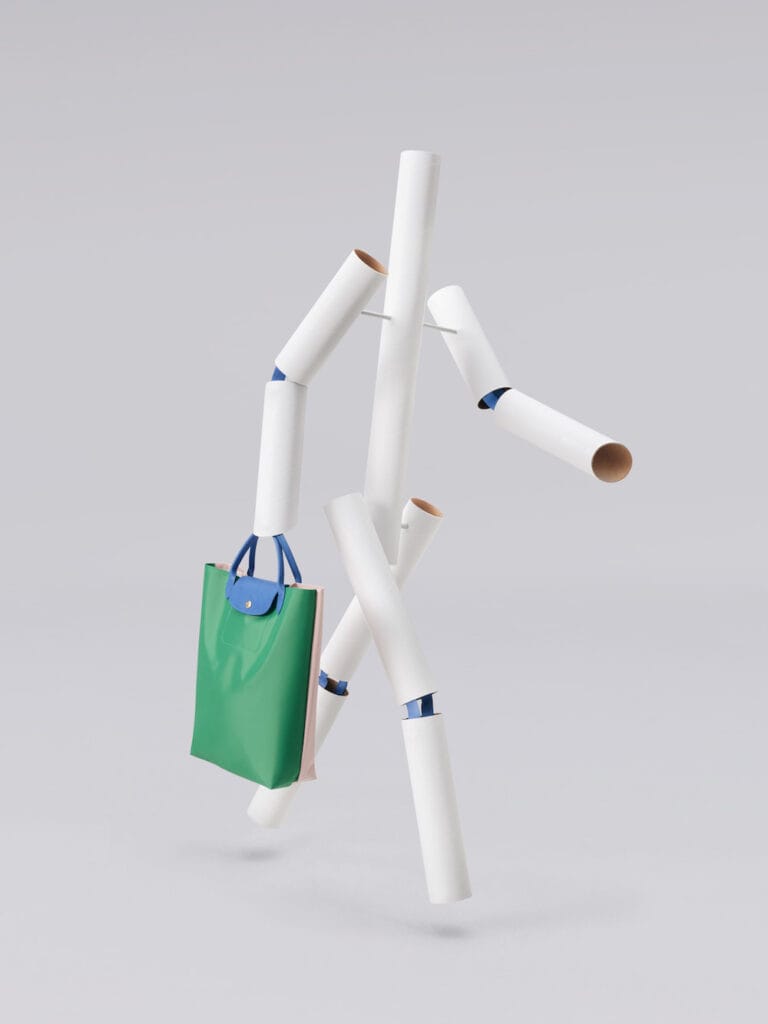Longchamp CEO, Jean Cassegrain on what it means to be sustainable and how Longchamp addresses the issue differently.
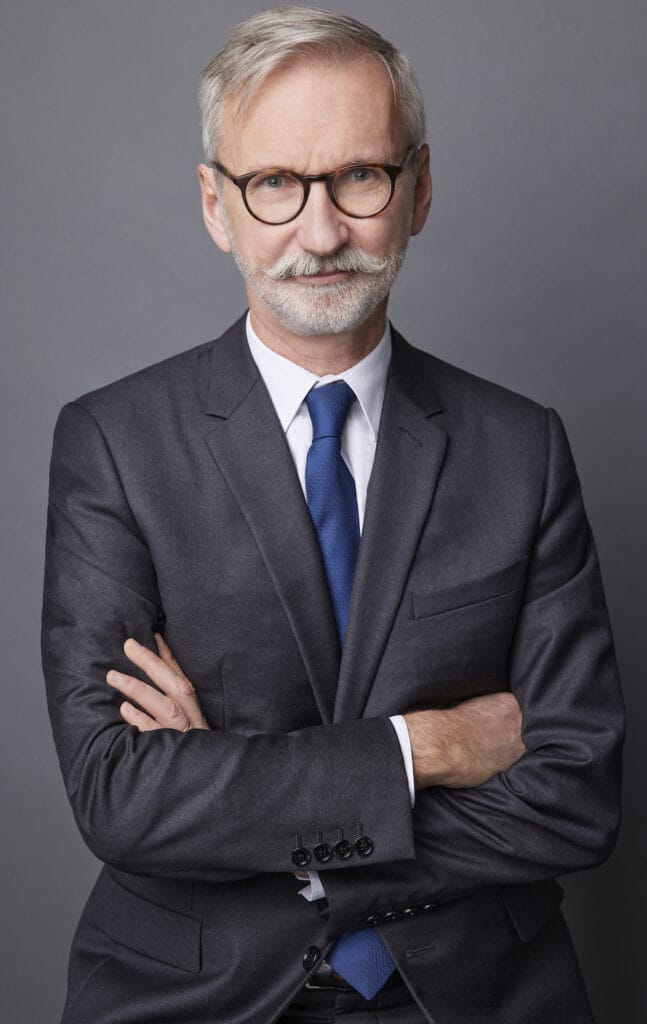
Jean Cassegrain, CEO of Longchamp
Since its founding in 1948, how has Longchamp evolved?
Well, Longchamp has been through many phases. I think we, the company, has been able to adapt to its time and remain contemporary at every moment of its life. So, the company started with accessories for men, such as pipes covered with leather. The leather has already been there from day one, but it was used in a very different way—it was used to embellish and make cigarette cases, pipes, tobacco pouches and ashtrays more luxurious. Then slowly, we started making other products such as wallets, coin purses and bags for men. It was only in the late ’70s—with the launch of ladies’ bags—that the brand started to have some female customers, and now ladies are our number one customer. Aside from leather goods, the brand has also expanded and evolved into fashion in a broader sense, with ready-to-wear and shoes. So from luxury leather pipes to shoes, dresses, and eyewear … it has been a journey.
Being a family business, how is Longchamp different to other players in the market?
I think, one important difference is that we are a family business, so it gives the brand a certain authenticity, integrity and interest for things that are more long-term. We are not under pressure to deliver results in the next quarter like some other more finance-oriented companies. If you have private equity and are in the stock market, you need to deliver results every quarter and you need to satisfy your stockholders and so on. For us, it’s more about looking at the next generation and having a long-term view.
Also, one thing that makes us different is that we are manufacturers, many other brands do not make their own products anymore. They are very good at what they do, and they have wonderful marketing but ultimately, they are not makers. They are not artisans as we are, and this is what defines us. I think it gives depth and roots to the company, which is very important. It allows us to not only guarantee the quality of the product but also how they are made in terms of corporate social responsibility (CSR) and traceability. These are becoming very important factors, and I think we are well positioned to control everything because we are the manufacturer.
Over the past two years, has there been a change in buying habits, and what do you think your customers are looking for in a product?
I think there seems to be a renewed appetite for going out and shopping. We are benefitting from the very strong uplift in the business with our customers in many different countries. I believe the term is “revenge shopping”, and I think there is definitely a little bit of that. I think another thing that is changing—perhaps this is a contradiction to my previous statement—is there is a renewed interest for CSR and sustainability. And I think this is becoming more part of the equation; a more important part of the relationship between a brand and its customers.
Do you think that’s what customers are looking for nowadays? That there is meaning to the product?
I think it’s not totally explicit, but there is an underlying trend that is very strong. My opinion is that a brand exists because it has the trust of its customer, so I think it’s paramount for brands to hold the trust of its customers and to deserve the trust of its customers. The customer buys a brand because there is a package of things that they expect from that brand, and that relationship of trust is based on things like quality. For example, if you buy this brand, you expect this level of quality. And while that remains very important, there is now another dimension that is equally as important—if not more—and that is the CSR.
When a customer buys a brand now, they expect a certain degree of responsibility, so they expect that the brand is going to behave in a responsible manner because at some point, if they realise that the brand is not behaving in a certain way, you [the brand] will lose their trust and for a brand that can be very damaging. So I think it’s now expected by the customers that the brand behaves in a sustainable way. Being sustainable is not going to trigger the purchase but it can most certainly do the opposite.
What are your thoughts on sustainability and why is it important to Longchamp?
One of our big concerns is obviously climate change and all of us need to be involved and act at our own level. Of course, as a business, we make and move products around the world, so we have a carbon impact. What we must do is find ways to operate our business and reduce the carbon impact at the same time. That’s what we are trying to do. At our own level, we cannot resolve the world’s problem alone, but we can each act in a way that contributes to reducing the global carbon emission. We have several initiatives for that, and we try to continue developing our business, because it is also our responsibility to our workers and partners. Therefore, we need to continue developing our business, but at the same time, we need to reduce our carbon footprint.
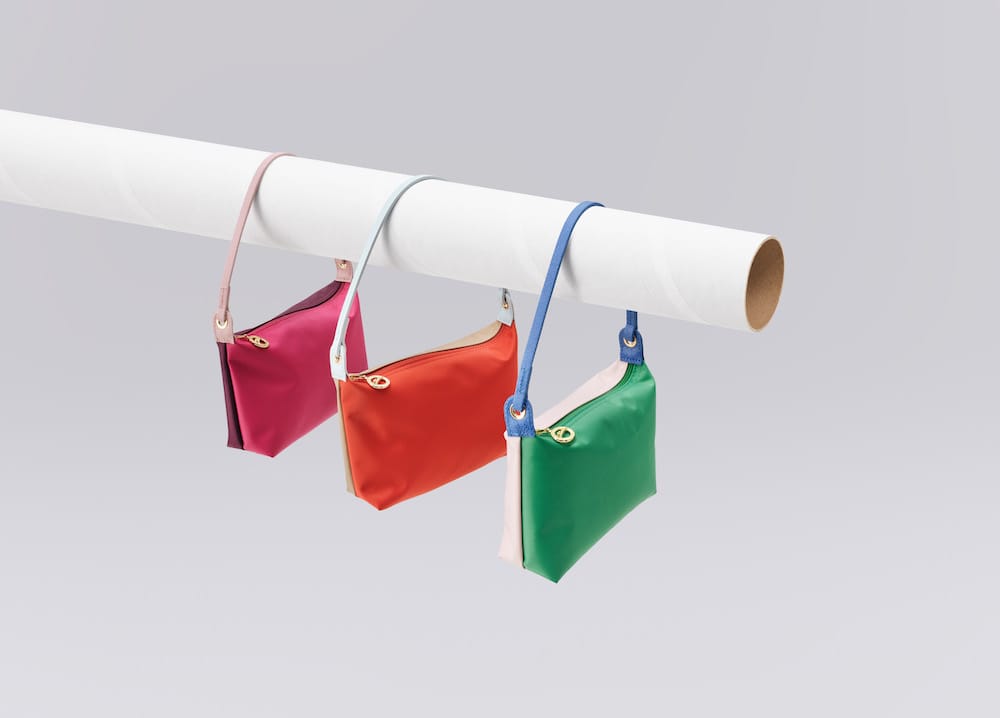
Le Pliage® Re-Play small shoulder bag
The brand has released several eco-friendly products over the past few years, is this a new direction for Longchamp and will we see only green products on the shelves in the future?
It’s not really a new direction, rather it’s something that we are more vocal about now. We realised that the customer is interested in knowing what is happening in the company that is behind the brand. As a private company, maybe in the past, we didn’t like to communicate too much about what is going on in the kitchen and we never really talked about it because we didn’t feel it was exciting. But we realise that the customer is now very interested in that. The customer wants to know what takes place in the kitchen, so we are opening the doors a little bit and trying to be more transparent.
Again, coming back to the fact that we are manufacturers, we have a different outlook on CSR. For brands that are not manufacturers, they have lost contact with what it physically means to make a product. Being in contact with the makings of the product, the raw materials, gives you a whole different attitude and point of view. Because when you’re just moving products from one logistics platform to another, the impact and the waste … all of that becomes abstract. As manufacturers, we can see the waste that we are producing—we can see how much it is, where it goes, and what’s being done with it. The artisans don’t like wasting and this boils down to the love and respect that they have for the materials. This attitude of being respectful towards the environment and not being wasteful has always been in us from the beginning and remains engrained in our DNA till this day.
To give you an example, we’ve always repaired our products. We have an excellent repair service, but we never talked about it because one, it seemed normal to us; two, it seemed uninteresting; and three, it seemed maybe, unglamorous. But now it’s all fashionable again, so we are more upfront about explaining that we process 60,000 products in our repair department every year, and we are very proud of it because there is nothing more sustainable than giving your products extra years of life by repairing it. That’s just an example of things we have done for a long time but are more vocal about it now.
Please tell us about Le Pliage® Re-Play. Why would your customers (especially the Gen Z) love this product?
Le Pliage® Re-Play is a sustainable initiative from our design team; they came up with this idea. We didn’t purchase anything for this line. From the nylon to the leather, everything comes from our inventories. The concept is akin to a chef in the kitchen. You open the fridge, you have your random leftover ingredients in the fridge and with what you have, you need to create the best possible dish in the most creative way. So that’s the concept. For Re-Play, it’s not only about reusing the materials that we have, but also addressing the agenda in an interesting and creative way, the result of which is fun, playful and colourful. All these aspects are very much in line with our DNA, which is about colour, lightness and optimism; I think it embodies the brand’s values very well. I think the Gen-Z will find it interesting and suitable for their needs because aesthetics aside, it is designed with sustainability in mind, so it reassures you on the fact that you are being with a brand that takes the issue seriously. And I believe, from what I am hearing, in Malaysia it’s becoming more on the top of the agenda for the younger generation.


